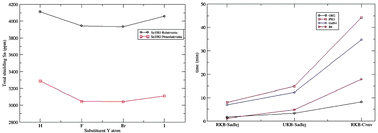The UKB prescription and the heavy atom effects on the nuclear magnetic shielding of vicinal heavy atoms
Abstract
Fully relativistic calculations of

Maintenance work is planned for Wednesday 1st May 2024 from 9:00am to 11:00am (BST).
During this time, the performance of our website may be affected - searches may run slowly and some pages may be temporarily unavailable. If this happens, please try refreshing your web browser or try waiting two to three minutes before trying again.
We apologise for any inconvenience this might cause and thank you for your patience.
* Corresponding authors
a
Department of Physics, Northeastern University of Argentina, Av Libertad 5500, Corrientes, Argentina
E-mail:
aleoml@yahoo.com.ar
b Department of Physics, Northeastern University of Argentina, Av Libertad 5500, Corrientes, Argentina
c
Institute for Modelling and Innovative Technology, I-MIT, CONICET-UNNE Av Libertad 5500, Corrientes, Argentina
E-mail:
gaa@unne.edu.ar
Fully relativistic calculations of

 Please wait while we load your content...
Something went wrong. Try again?
Please wait while we load your content...
Something went wrong. Try again?
A. F. Maldonado and G. A. Aucar, Phys. Chem. Chem. Phys., 2009, 11, 5615 DOI: 10.1039/B820609K
To request permission to reproduce material from this article, please go to the Copyright Clearance Center request page.
If you are an author contributing to an RSC publication, you do not need to request permission provided correct acknowledgement is given.
If you are the author of this article, you do not need to request permission to reproduce figures and diagrams provided correct acknowledgement is given. If you want to reproduce the whole article in a third-party publication (excluding your thesis/dissertation for which permission is not required) please go to the Copyright Clearance Center request page.
Read more about how to correctly acknowledge RSC content.
 Fetching data from CrossRef.
Fetching data from CrossRef.
This may take some time to load.
Loading related content
